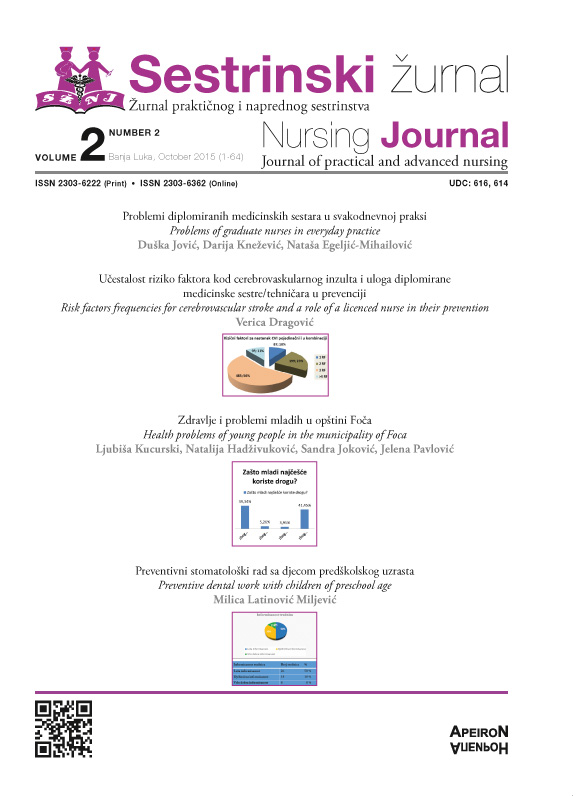Prevention of strabismus and amblyopia in preschool children / Prevencija razrokosti i slabovidosti dece predškolskog uzrasta
DOI:
https://doi.org/10.7251/SEZ0215049RAbstract
Squint (strabismus) is a disorder of the position and motion of the eyeballs. Visual axle only one eye directed towards the observation, while the other, belonging strabismus eye turns next to subjects of observation. The brain consequently can not fused image, but due to the presence of double vision clears one and with an eye that turns off the object of observation. Start strabismus mothers often associated with an illness with fever or cramps. Children are brought to the doctor most often due to the “ugly” looks. However, the importance of strabismus is far greater, because eyesight is getting increasingly worse and often leads to blindness (amblyopia) inactive eye.
The success of treatment depends on the time of detection of strabismus. Treatments need to be implemented as soon as walleye maintain, and certainly in the preschool age, because later can only be successful in the aesthetic sense.
In order to evaluate how parents are informed about the problems that walleye can cause, we investigated how they were informed about the problems of child vision and the importance of arriving at a systematic review them, control and exercise, testing visual acuity in children at an early age (the period from birth to two years ) and a period of three years until the start of school, for reasons of early detection and treatment of strabismus.
Results trials show that a slightly higher number of strabismus in boys (61%) than girls (39%). Parents are noticing a problem with seeing the review led to 50% by the end of the first year of life and 38% by the end of the third year of life so that the treatment is started in time. With 74% of our respondents walleye exists pointing to her family heredity. Most parents (78%) applied the advice given by the ophthalmologist, but 18% do so partially, and 5% do not implement the measures of treatment. In terms of awareness of strabismus half of parents think that is sufficiently informed partly informed by 27.5% and 22.5% insufficiently informed. All the surveyed parents want more information on the problems of vision that usually get from doctors (71%) and nurses (15%), only through the media and the Internet (14%).
The timely treatment of strabismus key role parents have to be on time to recognize the disorder and lead a child for review to the treatment began. It is necessary to better inform parents about the importance of regular attendance of children at the eye doctor as soon as they notice any vision problems.

